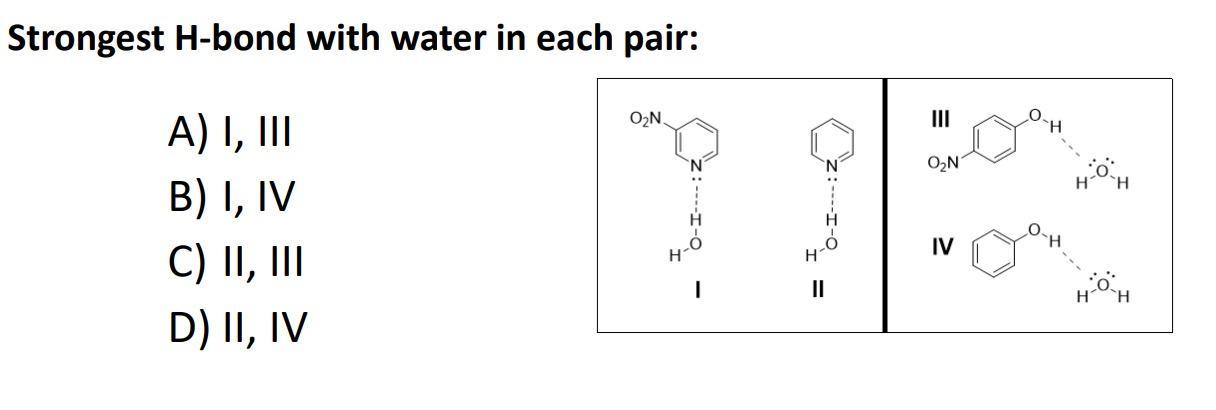Answers
I would say C
Since the nitro group (NO2) contains a positively charged nitrogen atom, it tends to attract electron from the aromatic ring and, therefore, the other group/atom. In the first case, I think piridine (II) makes a stronger bond with water since the nitrogen in the aromatic ring needs its electrons in order to be have a slight negative charge that can interact with the slightly positive charged hydrogen atom in water. If the nitro group is present, it will attract to some extent the electrons of the nitrogen atom in the ring, thus making the H-bond less stronger.
In the second case the hydrogen, which is slightly positive, of the OH group interacts with the oxygen, which is slightly negative, of water. If the nitro group is present, it will attract the electrons of oxygen of the hydroxyl group, therefore making the bond between the oxygen and the hydrogen more polar (which basically means that the bonding electron of hydrogen is even more attracted by the oxygen atom) making the hydrogen atom more positive, which means that the H-bond will be stronger
Related Questions
The two possible units of molarity are
Answers
Answer: The units for molarity are moles/liter.
Similarly, the equation to find molarity is moles divided by liters.
Explanation:
mol / L is a unit of molar concentration. These are the number of moles of dissolved material per liter of solution. 1 mol / L is also called 1M or 1molar. Mol / m3 is also a unit of molar concentration.
Molarity is expressed in units of moles per liter (mol / L). This is a very common unit, so it has its own symbol, which is the uppercase M. A solution with a concentration of 5 mmol / l is called a 5 M solution or has a concentration value of 5 mol.
The molar concentration of the solution is equal to the number of moles of the solute divided by the mass of the solvent (kilogram), and the molar concentration of the solution is equal to the number of moles of the solute divided by the volume of the solution (liter). increase.
